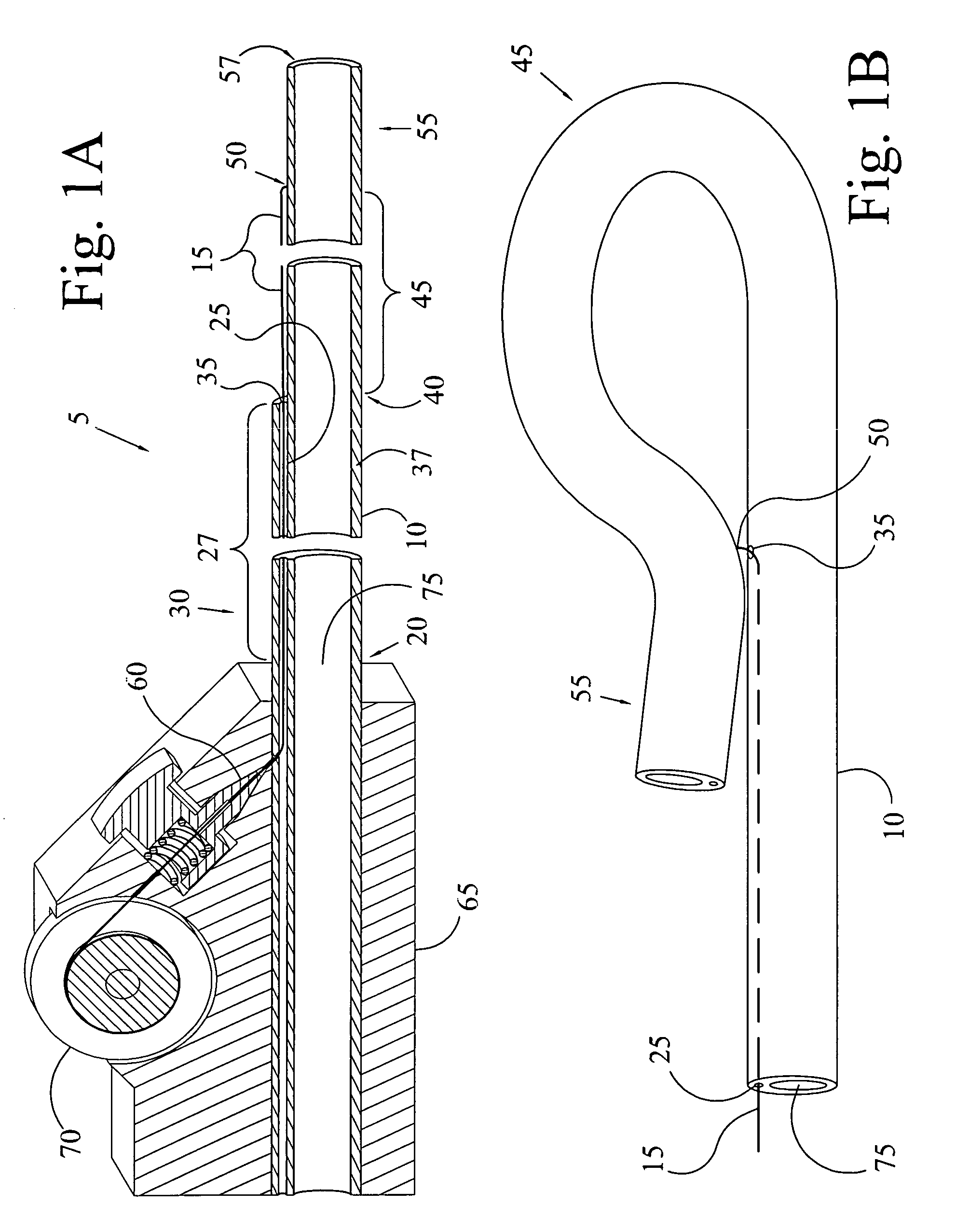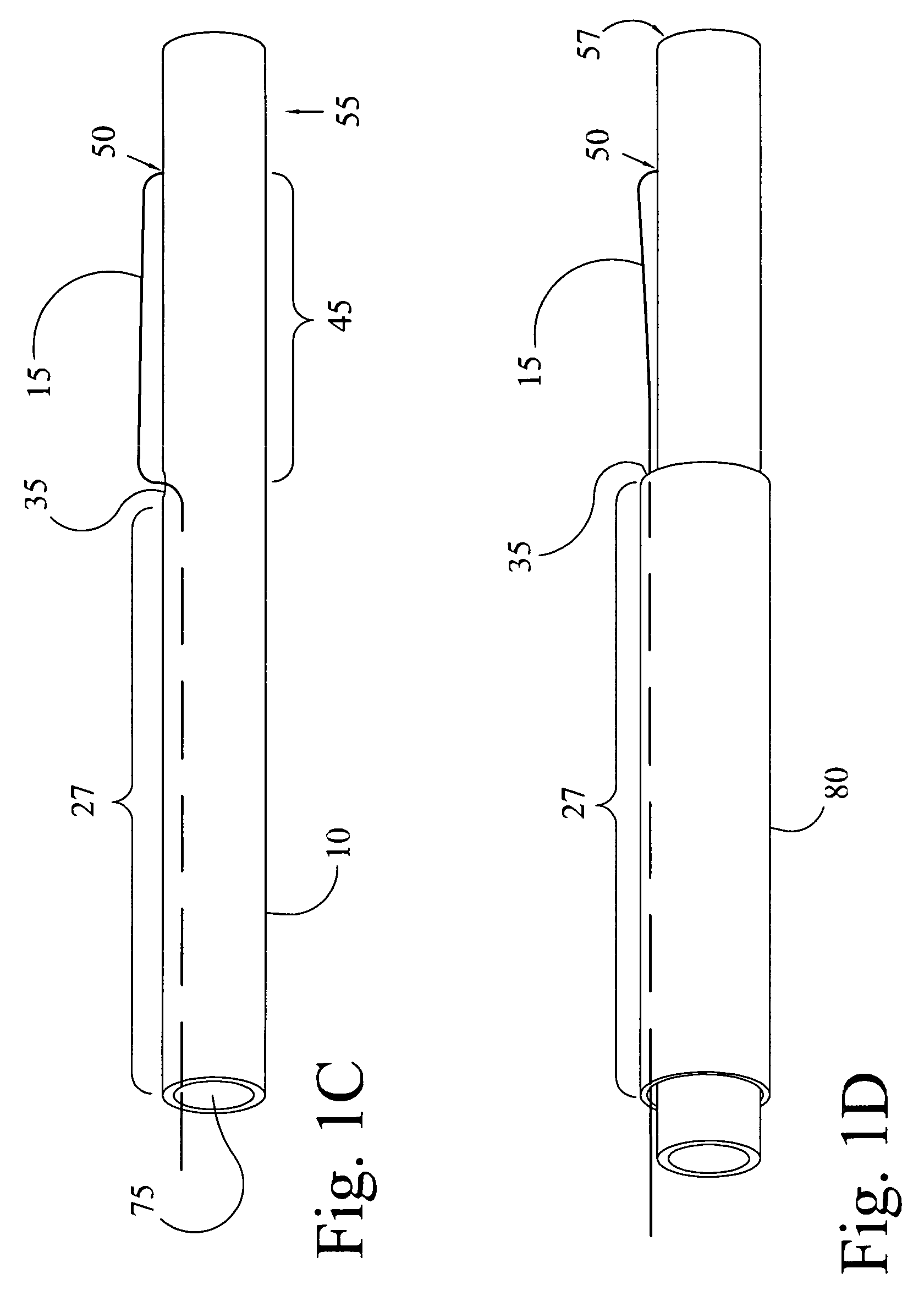Closable loop access guide catheter
a catheter and loop technology, applied in the field of interventional catheters, can solve the problems of catheter backing, difficult positioning of the guiding catheter into the ostium of the vessel to be treated, and exacerbate the problem of catheter backing
- Summary
- Abstract
- Description
- Claims
- Application Information
AI Technical Summary
Benefits of technology
Problems solved by technology
Method used
Image
Examples
Embodiment Construction
[0065]The present invention is an access guide catheter that is low profile to allow access via a radial artery approach and provides support for passage of an interventional catheter such as a stent system by forming a closed loop conformation. Larger catheters can also be formed using the present invention for other tubular vessels and applications not limited by vessel size. The low profile is accomplished by providing a very thin fiber that attaches near the distal region of the catheter and forces it to form a closed loop in the loop region of the catheter but still provide a great deal of support even though the wall thickness is thin and flexible. Support is provided by the closed loop which does not open up or back out of an ostium as tension is applied to the access guide catheter and an interventional catheter is being advanced within it.
[0066]FIG. 1A shows one embodiment of the access guide catheter (5) of the present invention. It is a 5-6 F catheter intended to fit well...
PUM
 Login to View More
Login to View More Abstract
Description
Claims
Application Information
 Login to View More
Login to View More - R&D
- Intellectual Property
- Life Sciences
- Materials
- Tech Scout
- Unparalleled Data Quality
- Higher Quality Content
- 60% Fewer Hallucinations
Browse by: Latest US Patents, China's latest patents, Technical Efficacy Thesaurus, Application Domain, Technology Topic, Popular Technical Reports.
© 2025 PatSnap. All rights reserved.Legal|Privacy policy|Modern Slavery Act Transparency Statement|Sitemap|About US| Contact US: help@patsnap.com



